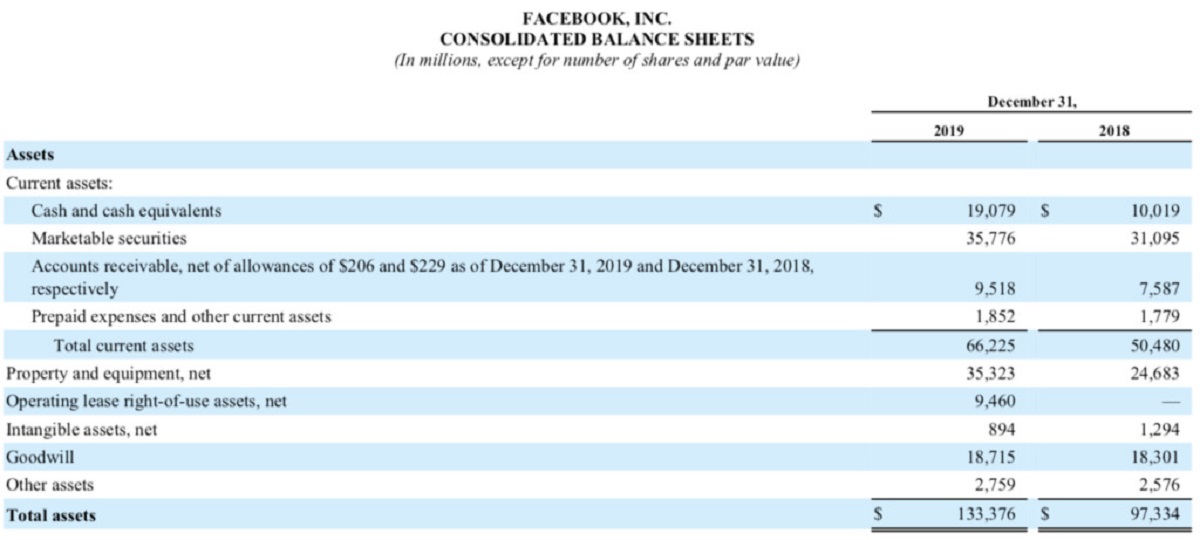Introduction
Welcome to the world of treasury banking, where financial strategies and money management come together to ensure the smooth operation of businesses and organizations. In this article, we will explore the concept of treasury banking, its functions, importance, benefits, and key players in the field.
Treasury banking refers to a specialized branch of banking that focuses on managing the financial affairs of a company or institution. It involves the handling of funds, liquidity management, cash flow forecasting, risk management, and investment strategies. The objective of treasury banking is to optimize the utilization of financial resources while minimizing risks and maximizing returns.
Within an organization, the treasury banking department plays a crucial role in maintaining financial stability and supporting the overall business strategy. It acts as a central hub where various financial operations intersect, including cash management, debt management, foreign exchange, and market transactions.
The primary functions of treasury banking include:
- Liquidity management: Ensuring that there are enough funds available to meet the daily cash requirements of the organization, while also minimizing idle cash.
- Cash flow forecasting: Analyzing past and present cash flows to predict future cash inflows and outflows, allowing the organization to plan accordingly.
- Risk management: Identifying and mitigating financial risks, such as interest rate fluctuations, foreign currency exposure, and credit risks, to protect the organization from potential losses.
- Investment management: Making strategic investment decisions to optimize the organization’s surplus funds and achieve higher returns.
- Debt management: Managing the organization’s borrowing activities by optimizing borrowing costs, renegotiating financing terms, and ensuring compliance with debt obligations.
The importance of treasury banking cannot be overstated. It provides organizations with the necessary financial tools and expertise to effectively manage their monetary resources, navigate volatile market conditions, and make informed financial decisions. By implementing sound treasury banking practices, organizations can enhance their financial stability, improve cash flow management, and reduce financial risks.
Treasury banking offers various benefits to both businesses and institutions. These include:
- Improved cash flow: Effective treasury banking ensures that organizations have sufficient funds available at the right time, reducing the risk of liquidity issues.
- Optimized financial performance: Through strategic cash management and investment decisions, treasury banking can help generate higher returns on surplus funds and enhance overall financial performance.
- Lower borrowing costs: By actively managing debt and optimizing borrowing rates, treasury banking can help organizations save on interest expenses and minimize financing costs.
- Enhanced risk management: The expertise of treasury banking professionals allows organizations to identify and mitigate various financial risks, safeguarding their financial position.
- Compliance and regulatory adherence: Treasury banking plays a critical role in ensuring compliance with financial regulations and reporting requirements, reducing the risk of penalties and legal issues.
Now that we have explored the importance and benefits of treasury banking, let us delve deeper into how treasury banking works, the key players involved, challenges in the field, and the latest trends shaping the industry.
Definition of Treasury Banking
Treasury banking is a specialized field within the financial industry that focuses on managing the financial operations and assets of businesses and organizations. It involves the handling of funds, liquidity management, cash flow forecasting, risk management, and investment strategies to ensure efficient money management.
Treasury banking encompasses a wide range of activities, including cash management, debt management, foreign exchange, and market transactions. It aims to optimize the utilization of financial resources while minimizing risks and maximizing returns.
The primary goal of treasury banking is to maintain the financial stability of an organization and support its overall business strategy. It acts as a central hub where various financial operations converge, enabling effective decision-making and ensuring the smooth functioning of a company or institution.
In essence, treasury banking serves as the financial backbone of an organization, providing crucial financial tools, expertise, and guidance to support its financial objectives. It involves the strategic management of cash flows, investments, and risks to ensure the financial health and long-term sustainability of the organization.
Within the realm of treasury banking, professionals work closely with departments such as finance, accounting, and risk management to analyze financial data, forecast cash flows, identify potential risks, and implement appropriate financial strategies. They use their knowledge of financial markets, banking products, and regulatory frameworks to guide decision-making and optimize financial outcomes.
Key areas of focus in treasury banking include:
- Liquidity Management: This involves ensuring that the organization has sufficient funds to meet its day-to-day cash requirements while also minimizing idle cash. It requires carefully managing cash inflows and outflows to maintain an optimal cash position.
- Cash Flow Forecasting: Forecasting future cash flows is essential for effective treasury banking. By analyzing past and present cash flows, professionals can predict future cash inflows and outflows, enabling the organization to plan and allocate resources effectively.
- Risk Management: Treasury banking professionals help identify and mitigate financial risks faced by the organization, such as interest rate fluctuations, foreign currency exposure, and credit risks. They develop risk management strategies to safeguard the organization’s financial position.
- Investment Management: Making strategic investment decisions is another crucial aspect of treasury banking. Professionals analyze investment options, assess risks and returns, and allocate surplus funds in investments that align with the organization’s financial goals.
- Debt Management: Managing debt is an integral part of treasury banking. Professionals evaluate borrowing needs, negotiate financing terms, monitor debt obligations, and optimize borrowing costs to ensure efficient debt management.
In summary, treasury banking focuses on the financial management of businesses and organizations. It involves handling cash flows, optimizing investments, managing risks, and ensuring the smooth operation of financial activities. By effectively utilizing financial resources and implementing sound financial strategies, treasury banking contributes to the financial stability and success of an organization.
Functions of Treasury Banking
Treasury banking serves several critical functions within an organization, all aimed at ensuring efficient money management, financial stability, and strategic decision-making. Let’s explore the main functions of treasury banking:
- Liquidity Management: One of the primary functions of treasury banking is to manage liquidity effectively. This involves maintaining an adequate level of cash reserves to meet the organization’s day-to-day operational cash requirements. Treasury banking professionals closely monitor cash flows, implement cash pooling techniques, and employ cash forecasting models to optimize the utilization of available funds.
- Cash Flow Forecasting: Cash flow forecasting is crucial for treasury banking. By analyzing historical data, market trends, and business projections, treasury banking professionals can predict future cash inflows and outflows with accuracy. This information facilitates decision-making in areas such as investment planning, debt management, and cash optimization.
- Risk Management: Treasury banking plays a vital role in identifying and managing financial risks. This includes assessing and mitigating risks associated with market fluctuations, interest rate changes, foreign exchange exposure, credit risks, and operational risks. Treasury banking professionals develop risk management strategies and implement hedging techniques to protect the organization’s financial position.
- Investment Management: Another key function is the management of investments. Treasury banking professionals evaluate various investment options, assess risk-return trade-offs, and make strategic investment decisions to maximize returns. They diversify investment portfolios, monitor market conditions, and ensure compliance with investment policies and regulations.
- Debt Management: The effective management of debt is critical for organizations, and treasury banking professionals play a crucial role in this area. They analyze borrowing needs, negotiate loan terms, optimize debt structures, and ensure the organization’s compliance with debt covenants. By managing debt prudently, treasury banking helps minimize interest expenses and refinancing risks.
- Financial Reporting and Compliance: Treasury banking professionals are responsible for accurate financial reporting and compliance with regulatory requirements. They maintain financial records, prepare financial statements, and ensure adherence to accounting standards. Additionally, they play a crucial role in managing regulatory relationships and overseeing compliance with financial regulations.
- Currency and Foreign Exchange Management: Treasury banking involves managing currency risks and foreign exchange exposure. Professionals in this field monitor currency fluctuations, develop strategies to minimize exchange rate risks, and execute foreign exchange transactions to facilitate international trade and manage currency positions.
Overall, the functions of treasury banking encompass various aspects of financial management, covering liquidity, cash flow, risk, investment, debt, and compliance. By fulfilling these functions effectively, treasury banking enables organizations to maintain financial stability, optimize financial resources, and make informed strategic decisions.
Importance of Treasury Banking
Treasury banking holds immense importance for businesses and organizations worldwide. It serves as a strategic function that ensures efficient financial management, supports decision-making processes, and safeguards the financial well-being of an organization. Let’s explore the key reasons why treasury banking is crucial:
- Financial Stability: Treasury banking plays a vital role in maintaining the financial stability of an organization. By effectively managing cash flows, liquidity, and investments, treasury banking ensures that the organization has sufficient funds to meet its financial obligations, operational needs, and unforeseen contingencies.
- Cash Flow Optimization: Effective treasury banking helps optimize cash flows within an organization. By forecasting and analyzing cash inflows and outflows, treasury banking professionals can efficiently allocate funds, minimize idle cash, and ensure that the organization has the necessary liquidity to cover operational expenses and fund growth initiatives.
- Risk Management: Treasury banking is instrumental in identifying, assessing, and managing financial risks. By monitoring market conditions, interest rate fluctuations, foreign exchange exposure, and credit risks, treasury banking professionals develop risk management strategies and implement hedging techniques to protect the organization from potential losses, ensuring its financial resilience.
- Strategic Decision-making: The insights and financial expertise provided by treasury banking are essential for strategic decision-making. Treasury banking professionals analyze financial data, investment opportunities, and market trends, enabling informed decision-making regarding capital allocation, investment planning, financing options, and overall financial strategy.
- Optimized Debt Management: Debt management is a critical aspect of treasury banking. By strategically managing debt, treasury banking professionals can optimize borrowing costs, negotiate favorable financing terms, and ensure compliance with debt covenants. Effective debt management helps reduce interest expenses, improve creditworthiness, and enhance the organization’s financial position.
- Compliance and Regulatory Adherence: Treasury banking ensures that the organization remains compliant with financial regulations and reporting requirements. This includes maintaining accurate financial records, preparing financial statements, and ensuring adherence to accounting standards. Compliance with regulations helps minimize legal risks, regulatory penalties, and reputational damage.
- Efficient Cash and Investment Management: Treasury banking ensures efficient cash and investment management, leading to improved financial performance. By optimizing cash utilization, monitoring investment opportunities, diversifying portfolios, and maximizing returns on surplus funds, treasury banking enhances overall financial efficiency and profitability.
- Facilitates International Operations: For organizations engaged in international trade, treasury banking plays a crucial role in managing foreign exchange risks and facilitating currency transactions. Professionals in this field monitor currency fluctuations, develop currency risk management strategies, and execute foreign exchange transactions, facilitating seamless international operations.
Overall, treasury banking is of paramount importance as it enables organizations to maintain financial stability, make informed strategic decisions, optimize cash flows and investments, manage risks, ensure compliance, and support growth and expansion initiatives. Its multifaceted functions contribute significantly to the long-term success and resilience of businesses and organizations in today’s complex financial landscape.
Benefits of Treasury Banking
Treasury banking offers a multitude of benefits to businesses and organizations, empowering them with the necessary financial tools and expertise to effectively manage their monetary resources and navigate the complexities of the financial landscape. Let’s explore the key benefits of treasury banking:
- Improved Cash Flow Management: Treasury banking ensures efficient cash flow management by forecasting cash inflows and outflows, optimizing collections and payments, and reducing idle cash. This leads to improved liquidity and better financial stability.
- Optimized Financial Performance: By employing sound financial strategies and investment management, treasury banking helps maximize returns on surplus funds. This leads to improved financial performance and profitability for the organization.
- Lower Borrowing Costs: Treasury banking professionals adeptly negotiate financing terms, manage debt portfolios, and optimize borrowing costs. This leads to reduced interest expenses, lower financing costs, and improved overall cost management.
- Enhanced Risk Management: Treasury banking plays a crucial role in identifying, assessing, and managing financial risks. By implementing risk management strategies and employing hedging techniques, organizations can protect themselves from market fluctuations, interest rate changes, and currency risks.
- Compliance and Regulatory Adherence: Treasury banking ensures that organizations remain compliant with financial regulations and reporting requirements. This helps mitigate legal risks, maintain credibility, and build trust with stakeholders.
- Optimized Working Capital: Through effective cash flow management, treasury banking helps optimize working capital for businesses. This leads to improved liquidity, reduced reliance on external financing, and increased financial flexibility.
- Strategic Financial Decision-making: Treasury banking provides valuable financial insights and expertise to support strategic decision-making. By analyzing financial data, market trends, and investment opportunities, organizations can make informed decisions regarding capital allocation, funding strategies, and long-term financial planning.
- Efficient Foreign Exchange Management: For businesses engaged in international trade, treasury banking ensures effective currency management. Professionals in treasury banking monitor exchange rate fluctuations, develop strategies to reduce currency risks, and execute foreign exchange transactions, enabling seamless cross-border operations.
- Optimized Debt Management: Treasury banking professionals strategize debt management to optimize borrowing costs, renegotiate financing terms, and minimize the organization’s exposure to refinancing risks. This leads to better control over debt obligations and improved financial stability.
Collectively, the benefits of treasury banking contribute to the overall financial health, stability, and success of businesses and organizations. By effectively managing cash flows, investments, risks, and compliance, treasury banking empowers entities with the ability to proactively navigate financial challenges, seize opportunities, and achieve their financial objectives.
How Treasury Banking Works
Treasury banking involves a systematic process of managing the financial operations and assets of businesses and organizations. It encompasses various functions, including cash management, liquidity management, risk management, and investment strategies. Let’s explore how treasury banking works:
1. Liquidity Management: Treasury banking starts with effectively managing the organization’s liquidity. The treasury team monitors cash inflows and outflows, ensuring that there are sufficient funds to meet ongoing operational and financial obligations. They employ cash management techniques such as cash pooling, cash forecasting models, and cash concentration to optimize the utilization of cash reserves.
2. Cash Flow Forecasting: Accurate cash flow forecasting is critical for effective treasury banking. By analyzing historical data and considering factors such as business projections, market trends, and macroeconomic indicators, treasury banking professionals can predict future cash inflows and outflows. This enables the organization to allocate resources efficiently and plan for any potential cash shortfalls or surpluses.
3. Risk Management: Treasury banking professionals identify and manage various financial risks faced by the organization. They analyze market conditions, interest rate fluctuations, foreign exchange exposure, credit risks, and operational risks. Based on their assessment, they develop risk management strategies and implement hedging techniques to minimize risk and protect the organization’s financial position.
4. Investment Management: Treasury banking involves managing the organization’s investment portfolio. The treasury team evaluates investment opportunities, assesses risk-return trade-offs, and strategically allocates surplus funds into various investments. They monitor market trends, analyze financial instruments, and execute investment transactions to maximize returns.
5. Debt Management: Treasury banking professionals manage the organization’s debt portfolio. They analyze borrowing needs, negotiate financing terms with lenders, and monitor debt obligations and debt service requirements. The treasury team ensures that the organization optimizes its borrowing costs, maintains a healthy debt-to-equity ratio, and complies with any debt covenants or contractual obligations.
6. Financial Reporting and Compliance: Treasury banking involves accurate financial reporting and compliance with regulatory requirements. The treasury team maintains financial records, prepares financial statements, and ensures adherence to accounting standards and financial regulations. They oversee compliance with reporting deadlines, regulatory filings, and any applicable tax requirements.
7. Currency and Foreign Exchange Management: For organizations involved in international activities, treasury banking includes managing currency risks and executing foreign exchange transactions. Treasury professionals monitor currency fluctuations, develop strategies to mitigate exchange rate risks, and implement measures to ensure efficient handling of foreign currency transactions.
Throughout the process, treasury banking professionals collaborate with various departments within the organization, including finance, accounting, and risk management. They leverage their financial expertise, market knowledge, and analytical skills to provide valuable insights and support decision-making processes.
Utilizing advanced financial technology systems and tools, treasury banking professionals automate and streamline processes, enhance data analysis and reporting capabilities, and ensure timely and accurate execution of financial operations. This enables them to effectively manage financial resources, optimize financial performance, and mitigate risks.
By operating through these systematic processes, treasury banking plays a vital role in maintaining financial stability, supporting strategic decision-making, and helping organizations achieve their financial goals.
Key Players in Treasury Banking
Treasury banking involves the collaboration of various key players who collectively contribute to the effective management of an organization’s financial operations and assets. Let’s explore the roles of these key players in treasury banking:
1. Treasury Manager: The treasury manager oversees the overall treasury function within an organization. They are responsible for developing and implementing treasury strategies, managing risk exposure, optimizing cash flow, and ensuring compliance with financial regulations. The treasury manager works closely with other departments to align financial goals and support the organization’s overall business strategy.
2. Treasury Analyst: A treasury analyst supports the treasury manager by conducting financial analysis, cash flow forecasting, and risk assessment. They assist in managing cash flows, analyzing investment opportunities, monitoring market trends, and evaluating financial risks. Treasury analysts play a crucial role in providing valuable insights and data-driven recommendations to support strategic decision-making.
3. Cash Management Specialist: Cash management specialists focus on managing the organization’s cash flows and optimizing liquidity. They monitor cash inflows and outflows, implement cash concentration techniques, and ensure that the organization maintains an optimal cash position. Cash management specialists also handle day-to-day cash operations, including payments, receivables, and cash pooling.
4. Risk Manager: Risk managers play a critical role in treasury banking by identifying, assessing, and managing financial risks. They analyze market conditions, interest rate fluctuations, foreign exchange exposure, and credit risks to develop risk management strategies. Risk managers collaborate with the treasury team to implement risk mitigation measures, such as hedging techniques and insurance policies, to protect the organization from potential losses.
5. Investment Manager: Investment managers focus on optimizing the organization’s investment portfolio. They analyze investment opportunities, evaluate risk-return trade-offs, and make informed investment decisions. Investment managers monitor market trends, research financial instruments, and execute investment transactions to maximize returns on surplus funds. They play a crucial role in diversifying the investment portfolio and aligning investment strategies with the organization’s financial goals.
6. Treasury Operations Specialist: Treasury operations specialists are responsible for executing financial transactions, maintaining financial records, and ensuring smooth treasury operations. They handle financial settlement processes, manage banking relationships, and oversee the implementation of treasury management systems. Treasury operations specialists play a key role in maintaining accuracy and efficiency in treasury operations.
7. Financial Technology (FinTech) Providers: FinTech providers offer technological solutions and platforms to support treasury banking functions. Their software and tools automate processes, enhance data analysis capabilities, and provide real-time visibility into financial operations. FinTech providers play a significant role in streamlining treasury operations, improving efficiency, and facilitating better decision-making through advanced analytics.
These key players in treasury banking work closely with other departments within the organization, such as finance, accounting, and risk management. They collaborate to ensure effective financial management, optimize cash flow, mitigate risks, and support overall strategic objectives. Together, they contribute to maintaining financial stability, maximizing returns, and safeguarding the organization’s financial well-being.
Challenges in Treasury Banking
Treasury banking faces various challenges in today’s dynamic and complex financial landscape. These challenges require treasury professionals to adapt, innovate, and navigate through potential obstacles. Let’s explore some of the key challenges in treasury banking:
1. Market Volatility: Treasury banking operates in an environment characterized by market fluctuations and volatility. Rapid changes in interest rates, foreign exchange rates, and commodity prices can impact cash flows, investment returns, and risk exposures. Treasury professionals need to closely monitor market conditions, develop contingency plans, and employ risk management strategies to navigate through such volatility.
2. Regulatory Compliance: The regulatory landscape governing treasury banking is complex and subject to frequent changes. Treasury professionals must stay updated with new regulations, reporting requirements, and compliance standards. Ensuring adherence to these regulations can be a challenge, requiring robust systems, processes, and internal controls.
3. Cybersecurity Risks: With the increasing digitalization of financial operations, cybersecurity is a significant concern in treasury banking. Cyberattacks, data breaches, and fraud attempts pose serious threats to financial systems and information. Treasury professionals must implement stringent security measures, employ secure networks and technology solutions, and remain vigilant to protect the organization’s financial data and assets.
4. Liquidity Management: Maintaining optimal liquidity while minimizing idle cash is a continuous challenge in treasury banking. Organizations need to balance their cash reserves to ensure they have enough liquidity to meet financial obligations while maximizing investment returns. Accurate cash flow forecasting, efficient cash pooling techniques, and proactive liquidity management strategies are essential to overcome this challenge.
5. Technology Integration: Incorporating advanced technology solutions into treasury operations can be a complex endeavor. Integrating Treasury Management Systems (TMS), FinTech solutions, and automated processes requires careful planning, system compatibility, and effective change management. Treasury professionals need to ensure smooth technology integration to leverage the benefits of enhanced functionality, data analytics, and streamlined processes.
6. Counterparty Risk: In treasury banking, organizations engage in transactions with various counterparties, including banks, financial institutions, and vendors. Evaluating and managing counterparty risks, such as credit risk and operational risk, is crucial to safeguarding the organization’s financial position. Treasury professionals need to conduct due diligence, assess financial stability, and put in place risk mitigation measures when dealing with counterparties.
7. Talent Management: Maintaining a skilled and knowledgeable treasury team can be a challenge. The treasury profession requires expertise in cash management, risk management, investment strategies, and financial technology. Organizations need to attract and retain top talent, provide continuous professional development opportunities, and foster a culture of innovation to effectively address the challenges in treasury banking.
Addressing these challenges requires proactive risk management, continuous monitoring of industry developments, and staying agile in response to changing market conditions. Treasury professionals must adopt innovative solutions, leverage technology, and collaborate across departments to effectively manage these challenges in treasury banking.
Trends in Treasury Banking
Treasury banking is constantly evolving to adapt to the changing financial landscape and technological advancements. Several trends are shaping the future of treasury banking. Let’s explore some of the key trends in treasury banking:
1. Digital Transformation: The digital transformation wave is sweeping through all sectors of the financial industry, including treasury banking. Increasingly, organizations are embracing automation, artificial intelligence (AI), and robotic process automation (RPA) to streamline treasury operations and enhance efficiency. Digital solutions are being adopted for cash management, risk management, and reporting, providing real-time visibility and improved decision-making capabilities.
2. Cloud Computing: Cloud computing is revolutionizing the treasury landscape by enabling secure and scalable storage of financial data. It offers flexibility, accessibility, and cost-effectiveness, allowing treasury professionals to access critical information and collaborate seamlessly from anywhere. Cloud-based treasury management systems (TMS) are becoming popular, providing real-time data and analytics to support better decision-making.
3. Big Data and Analytics: The availability of vast amounts of data has presented treasury professionals with new opportunities. Big data analytics tools are increasingly being used to analyze financial market trends, cash flow patterns, and customer behavior. This allows treasury professionals to make data-driven decisions, develop accurate cash flow forecasts, and identify potential risks and opportunities.
4. Blockchain Technology: Blockchain technology is gaining traction in treasury banking, particularly in areas such as cross-border payments, trade finance, and supply chain finance. Its decentralized and secure nature enhances transparency, reduces transaction costs, and speeds up settlement processes. The use of blockchain can streamline treasury operations, improve cash visibility, and ensure data integrity.
5. Environmental, Social, and Governance (ESG) Factors: Companies are increasingly focusing on ESG factors to drive sustainable and responsible business practices. Treasury banking is incorporating ESG considerations into investment decisions, risk assessments, and cash management strategies. ESG-linked financing, such as green bonds or sustainable loans, are gaining popularity as organizations align their treasury activities with their sustainability and social responsibility goals.
6. Real-Time Payments: The demand for instant, 24/7 payments is growing rapidly. Treasury banking is adapting to this trend by implementing real-time payment processing capabilities. Real-time payment systems allow for faster fund transfers, improved cash visibility, and enhanced liquidity management.
7. Regulatory Changes: Regulatory frameworks continue to evolve and impact treasury banking. Organizations need to stay updated with changing regulations, such as International Financial Reporting Standards (IFRS), Basel III, and local compliance requirements. Treasury professionals must ensure compliance, implement effective risk management strategies, and maintain transparency in reporting.
8. Treasury Outsourcing and Partnerships: Organizations are increasingly outsourcing select treasury functions to specialized service providers. This allows organizations to access expert knowledge, advanced technology, and scalability while focusing on core business operations. Strategic partnerships and collaborations with fintech firms and treasury consultants are becoming more common to enhance treasury capabilities.
These trends in treasury banking highlight the need for treasury professionals to embrace digital transformation, leverage data analytics, adopt innovative technologies, and stay agile in response to market dynamics. By leveraging these trends effectively, organizations can enhance their treasury operations, improve financial decision-making, and optimize their financial performance.
Conclusion
Treasury banking plays a crucial role in the financial management and stability of businesses and organizations. It encompasses various functions, including liquidity management, cash flow forecasting, risk management, investment strategies, and compliance. Treasury banking is vital for ensuring efficient money management, supporting strategic decision-making, and safeguarding the financial well-being of organizations.
The importance of treasury banking lies in its ability to optimize financial resources, manage risks, and enhance financial performance. Through effective cash flow management, organizations can improve liquidity, optimize working capital, and minimize borrowing costs. Treasury banking professionals identify and mitigate financial risks, ensuring resilience against market fluctuations, interest rate changes, and currency risks.
Furthermore, treasury banking enables organizations to make informed strategic decisions by analyzing financial data, market trends, and investment opportunities. It supports compliance with financial regulations, reporting requirements, and fosters responsible and sustainable business practices. By leveraging technology, embracing digital transformation, and staying agile in response to market trends, treasury banking professionals can overcome challenges and take advantage of emerging trends.
In conclusion, treasury banking is a dynamic and essential function in the financial industry. It empowers organizations to effectively manage their financial resources, optimize cash flows, mitigate risks, and support long-term financial stability. By staying abreast of industry developments, embracing technological advancements, and leveraging data analytics, organizations can achieve greater financial resilience, improved decision-making, and long-term success in the ever-evolving world of treasury banking.

























